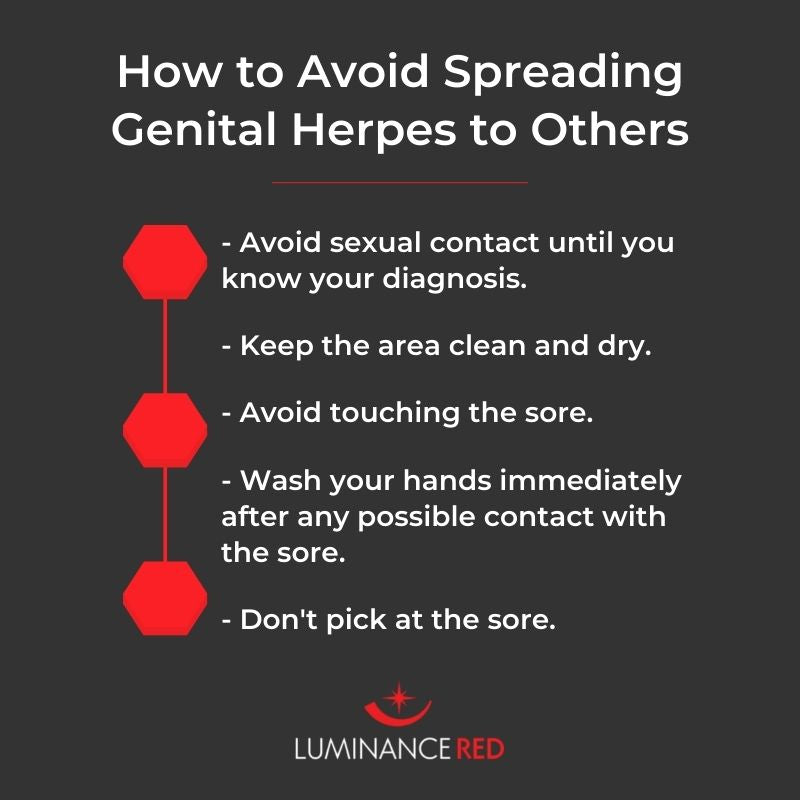Can Genital Herpes Be One Bump or Is It Multiple Blisters?

It’s never fun to find an unidentified bump on your body, especially in the genital region. The first worry that springs to mind for many people is genital herpes. But can genital herpes be one bump? Or does it have to be multiple blisters?
In this post, we’ll talk about what genital herpes is, how to identify it, and whether or not it can appear as a single bump.
What Causes Genital Herpes?
Genital herpes is part of a large family of viruses known as herpesviruses, which can cause a variety of illnesses such as cold sores, chickenpox, and shingles. Genital herpes is most commonly caused by the herpes simplex virus, type 2 (HSV-2), though less often it can result from a genital infection with herpes simplex virus, type 1 (HSV-1).
HSV-2 is a sexually transmitted infection with no known cure. Once you contract the virus, it remains in the nerves around your genital area for the rest of your life.
Not everyone who contracts HSV-2 will develop symptoms. When they do, however, the most easily recognizable symptom is the formation of painful, itchy bumps and blisters in the genital area.
Normally, a first outbreak with genital herpes is accompanied by other, more generalized symptoms, including:
- Body aches
- Fatigue
- Fever and chills
- Headache
- Painful urination
- Swollen lymph nodes in the groin and pelvic area
After blisters form, they may take up to four weeks to heal completely. Fortunately, subsequent outbreaks usually heal within three to seven days, although they can recur fairly frequently.
Genital herpes is an extremely common virus. In the United States alone, one out of six people between the ages of 14 and 49 has an HSV-2 infection, according to the Centers for Disease Control.
What Do Genital Herpes Bumps Look Like?
A genital herpes outbreak can appear in the form of a single fluid-filled sore or a small cluster of blisters. These blisters appear around the genitals, inner thighs, and buttocks. Lesions may sometimes form inside the vagina as well.
Herpes blisters may look like small red bumps in the beginning, but they then visibly fill with fluid. Over the course of several days, these fluid-filled blisters burst naturally, releasing their fluid. A brown or yellow crust forms, and the affected skin begins to heal.
Can Genital Herpes Be One Bump?
A genital herpes outbreak usually begins as a small cluster of blisters. While these may eventually look like one blister, it’s unusual for genital herpes to start as one bump.
If you discover a single bump in your genital area, it could have a number of other causes.
Insect Bite
Insect bites can vary in appearance, but they’re usually a single bump. It’s uncommon for insect bites to occur in the groin area because of the clothing that covers the area. But if you’ve spent a significant amount of time outdoors, you may have received a bite from a mosquito, tick, or any other insect.
Unlike genital herpes blisters, very few insect bites become filled with fluid unless they are infected.
Ingrown Hair
Ingrown hairs in the genital area are fairly common, especially for people who shave in the area. Ingrown hairs occur when a hair grows back into the skin and a pimple-like lesion forms around it.
Ingrown hairs don’t cause the other symptoms that come with a first outbreak of genital herpes, like fever, headache, or swollen lymph nodes. They may be painful or itchy, but if they fill up, they typically contain white pus instead of clear fluid and don’t burst on their own.
Pimple
Pimples most commonly appear on the face, neck, and back, and although they can form in the genital region, it’s uncommon.
Pimples usually appear as red bumps and sometimes contain yellow or white pus. They don't generally leak unless you squeeze them. Genital herpes lesions, on the other hand, fill with clear fluid and burst on their own within a few days.
What To Do Next
If you have a single, isolated bump in your genital area unaccompanied by other symptoms, it’s probably not genital herpes. However, only a laboratory test can tell for sure.
If you suspect genital herpes, it’s important to take steps to identify it, since HSV-2 is a highly contagious virus.
Contact Your Physician or Clinic
Because the only sure way to diagnose genital herpes is with lab tests, you’ll need to contact your primary care physician, gynecologist, or local health department for testing. There are six ways to test for HSV-2:
- Swab culture of the blister
- Polymerase chain reaction (PCR) test
- Antigen detection
- Antibody blood test
- At-home test
- Lumbar puncture (this is not usually necessary)
Avoid Spreading Genital Herpes to Others
Until you’re completely certain that your bump isn’t genital herpes, it’s important to take certain precautions to keep from spreading HSV-2 to sexual partners.
- Avoid sexual contact until you know your diagnosis.
- Keep the area clean and dry.
- Avoid touching the sore.
- Wash your hands immediately after any possible contact with the sore.
- Don’t pick at the sore.

By getting tested as soon as possible, you’ll be able to move forward with assurance. If your single bump isn’t genital herpes, then you can simply care for it appropriately. If it is genital herpes, you can explore the many options for managing this common illness.














